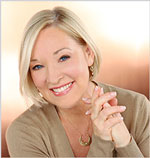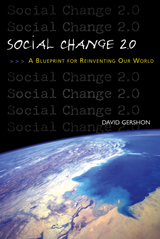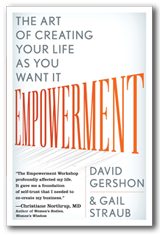This certification program is currently unavailable.
CONVERSATIONS WITH VISIONARY COLLEAGUES ABOUT THE EMPOWERMENT MODEL
 Christiane Northrup, M.D., is a visionary pioneer and the world’s leading authority in the field of women’s health and wellness. Dr. Northrup is a leading proponent of medicine that acknowledges the unity of mind, body, emotions, and spirit. Internationally known for her empowering approach to women’s health and wellness, Dr. Northrup is the author of many books including the best selling Women’s Bodies and Women’s Wisdom.
Christiane Northrup, M.D., is a visionary pioneer and the world’s leading authority in the field of women’s health and wellness. Dr. Northrup is a leading proponent of medicine that acknowledges the unity of mind, body, emotions, and spirit. Internationally known for her empowering approach to women’s health and wellness, Dr. Northrup is the author of many books including the best selling Women’s Bodies and Women’s Wisdom.
Gail: How has the Empowerment Workshop assisted you in your own life?
Chris: “It gave me a foundation of self-trust that I needed to co-create my business Women to Women. I have no idea how I would have believed I could do this without the reinforcement of the empowerment model. I actually don’t know how people go through their lives without knowing these principles of how the universe works. Otherwise you are a boat without a rudder.”
Gail: How does it assist you as a doctor and a healer when a client has done the Empowerment Workshop?
Chris: “When I know that somebody has taken the Empowerment Workshop I know instantly that we have a baseline shared language from which to start. So I don’t have to reinvent the wheel as it were. This person at least knows the basic laws of the universe, the laws of manifestation, the laws of attraction. And then what I do is take it from there more deeply into the body. What I used to believe was that anyone who took the Empowerment Workshop would understand implicitly that their body was just an extension of all that they had learned. Unfortunately this is not the case. What I have found is that our entire society and our culture is set up from birth with the erroneous belief system that your body is something separate from the rest of your life. That is what I call the “medicalization” of the human body. The Empowerment Workshop gives a client the language of how we create our realities. Then using the language of science and psychoneuroimmunology I am able to take that client deeper into my own field. I can teach them how thoughts and beliefs literally become cellular tissue, and affect hormonal levels, and that sort of thing.”
Gail: How does the empowerment model with the strong emphasis on the power of beliefs affecting the conditions of our life, and focusing on vision versus pathology facilitate the healing process?
Chris: “I think actually on some deep level there is nothing else that can facilitate the healing process. First of all we have to believe that it is possible to be healthy. We have to believe that our baseline nature and essence is health. That all is well and that the body knows how to stay healthy and how to heal itself. And if we don’t have that in place, we will be on an endless search for the drug, the next surgical procedure, the next health care practitioner with the magic bullet. When, in fact, the magic bullet in always within us. So I think the empowerment model reverses the paradigm of an addicted culture. Your model insists on self responsibility, using on-going support systems, finding your own truth, and always bringing a person back to themselves.”
Gail: Is there anything else you wish to add?
Chris: “I would say that I have been profoundly gifted in that close members of my family, my mother, my spouse, and basically all the original founders of Women to Women went through the workshop. We founded that business on the basis of the empowerment principles. So I have seen, on a day-to-day basis, my closest associates and family members live in this way. This has created a base of support that has allowed me to make quantum leaps in my own life.”
 Diane Brown has a twenty year background in human services. For over a decade she has been the Executive Director of the Southern Tier AIDS Program in Johnson City, New York. She has a staff of twenty-six people, and twenty of them have attended Empowerment Trainings. Diane’s primary interest has always been in serving those who are under-served by society.
Diane Brown has a twenty year background in human services. For over a decade she has been the Executive Director of the Southern Tier AIDS Program in Johnson City, New York. She has a staff of twenty-six people, and twenty of them have attended Empowerment Trainings. Diane’s primary interest has always been in serving those who are under-served by society.
Gail: When did the “Practice of Empowerment” training program impact you and your organization?
Diane: We had started to look at how our organization could better help our clients with HIV and AIDS live better lives. We wanted to know what we could do to allow them to find what is possible in their lives. We wanted to shift our focus as an organization away from what wasn’t working to what was possible. Of course, this is exactly what the empowerment model was based on. Personally I was just crying out to hear something like this. All of us came back from the training extremely excited about how well this would translate into the work we do with people living with HIV and AIDS, and the general values we hold within the organization. So we started to work with the model immediately.
I recall a situation where we were having some problems with a local clinic where one of my case managers was stationed. The four of us who had done the training came into my office and shut the door. What was interesting was that we started that meeting with the old way of thinking, listing all the problems we were having. We got through half a page and I said wait a minute, wait a minute. We just came back from the Art of Empowerment, we are going about this all wrong. We ripped it apart and said let’s list how we want this to be. And in forty minutes, literally, we had our plans on the wall. It was unbelievable to me really. It took forty minutes to go from what are the problems, to how do we want it to be, and we had a plan worked out. I don’t want to sugar coat this, and say it was all smooth sailing from there because it wasn’t. But this is now how we do our work here.
Gail: So the emphasis in the empowerment model on shifting the world-view of an organization from pathology to vision was significant for your organization?
Diane: Yes, we took that principle and ran with it. We don’t call our meetings problem-solving meetings, we call them visioning meetings. Our work groups are focused on “What is it we want the organization to look like?” Within the leadership of the organization, we pretty much will not buy into the pathology model anymore. We constantly ask the question of how we want it to be.
Gail: How does the empowerment model support you in the actual work with people living with HIV or AIDS?
Diane: When we sit down with a client we do so with the idea of looking at what is possible for them in their lives. Our case managers strongly encourage clients to look at how they can make changes, and also help them understand how they can create their lives to feel more in control. We also run our groups this way. We have an empowerment group for clients with AIDS. I’d like to read you what one of our clients has written about this empowerment group: “It is not a twelve step program. It is more than a support group. It is a way to put yourself in control using the powers and abilities you already have and the new ones you can try. The group helps with direction. If you want to change part or all of your life situation, give us a try. Empowerment can help you change your life, improve your life, or understand your life. Every meeting has a different focus, a different exercise for personal growth and understanding. Every meeting has caring people and is holistic with discussions, awareness building, support, discovery, development of inner strength, and CONTROL.”
Gail: I understand you have submitted a proposal called Living and Working with HIV/AIDS: An Empowerment Model for Community-Based AIDS Organizations and People Living with HIV/AIDS to be presented at an international AIDS conference.
Diane: I haven’t heard back about that yet. It’s generally a very scientific conference, and the typical AIDS service model is not necessarily a positive model, so I am going out on a limb. But I have put it out there, and my vision is that I will be standing up there in Vancouver talking about Empowerment and AIDS. It’s so important because people who work with AIDS are often burdened with hopelessness and helplessness as to what can be done. The epidemic is overwhelming, it’s so big. But once they start to consciously, and I think consciously is the important word, look at themselves and help their clients look at what I can do versus what I can’t do, something fundamental can change.
(Diane presented at that conference about the empowerment model and her successful use of it. It was received with great enthusiasm.)
TRACK 2 VIDEOS
Societal Change Applications of Track Two
A Vehicle for Collective Transformation
A Turn-key Program
Applying Track 2 to Empower Women in the Developing World
SCHOOL FOR TRANSFORMATIVE SOCIAL CHANGE
 Read about the Empowerment Institute Certification Program in a free download from David Gershon’s award-winning book Social Change 2.0: A Blueprint for Reinventing Our World, “Building Leadership Capacity to Change the World: A School for Transformative Social Change.”
Read about the Empowerment Institute Certification Program in a free download from David Gershon’s award-winning book Social Change 2.0: A Blueprint for Reinventing Our World, “Building Leadership Capacity to Change the World: A School for Transformative Social Change.”
EMPOWERMENT AUDIO

Listen to excerpts from David Gershon and Gail Straub’s best-selling book Empowerment: The Art of Creating Your Life As You Want It, read by the authors:
TRACK 2 TESTIMONIALS

“I just love the Empowerment Life Coaching Program. The way you have designed it enables real transformation. I am amazed by the immediate results it achieves in people’s lives. I am building my clientele fast. I got thirteen new clients and earned back my investment three times over within several months. Of course, it is through my own enthusiasm and belief in the excellence of this program that I created these results.”
— Isis Saris, Life Coach
